
My previous guide for qBittorrent involved the use of Task Scheduler. Today I’m offering a recommended and excellent alternative for installing the latest qBittorrent version via Portainer. qBittorrent is a safe torrent client. The qBittorrent project aims to provide an open-source software alternative to µTorrent. Since its release, qBittorrent has received numerous feedback and positive reviews as being reliable and very lightweight software. In this step by step guide I will show you how to install qBittorrent on your Synology NAS using Docker & Portainer.
This guide works perfectly with the latest qBittorrent v5.1.2 release.
STEP 1
Please Support My work by Making a Donation.
STEP 2
Install Portainer using my step by step guide. If you already have Portainer installed on your Synology NAS, skip this STEP. Attention: Make sure you have installed the latest Portainer version.
STEP 3
Go to File Station and open the docker folder. Inside the docker folder, create one new folder and name it qbittorrent. Follow the instructions in the image below.
Note: Be careful to enter only lowercase, not uppercase letters.
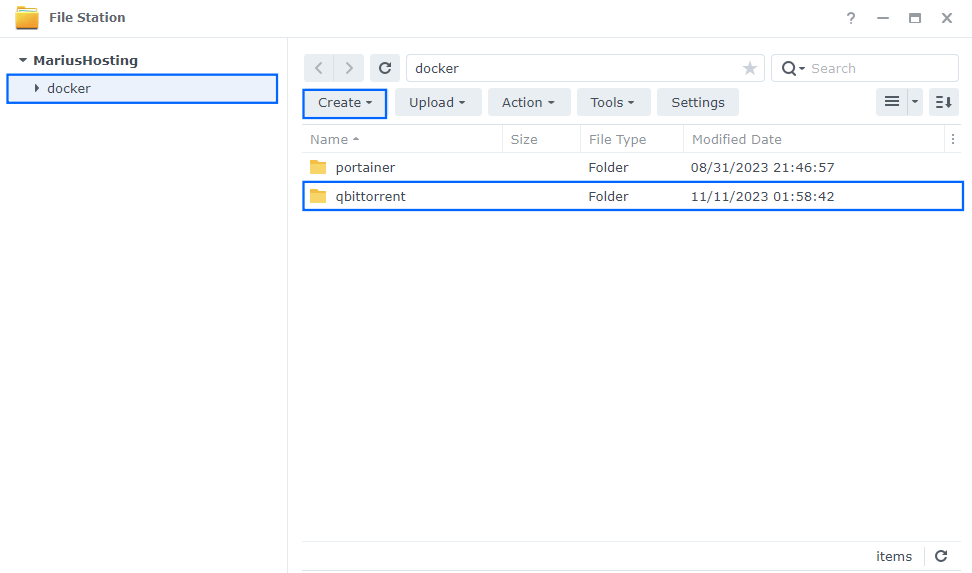
STEP 4
Now create two new folders inside the qbittorrent folder that you have previously created at STEP 3 and name them config and downloads. Follow the instructions in the image below.
Note: Be careful enter only lowercase, not uppercase letters.
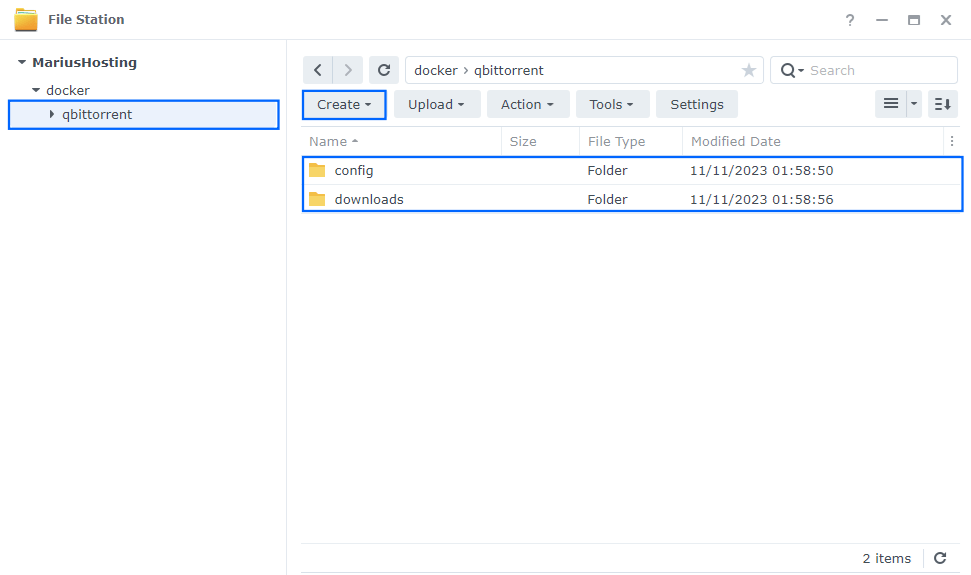
STEP 5
Log into Portainer using your username and password. On the left sidebar in Portainer, click on Stacks then + Add stack. Follow the instructions in the image below.
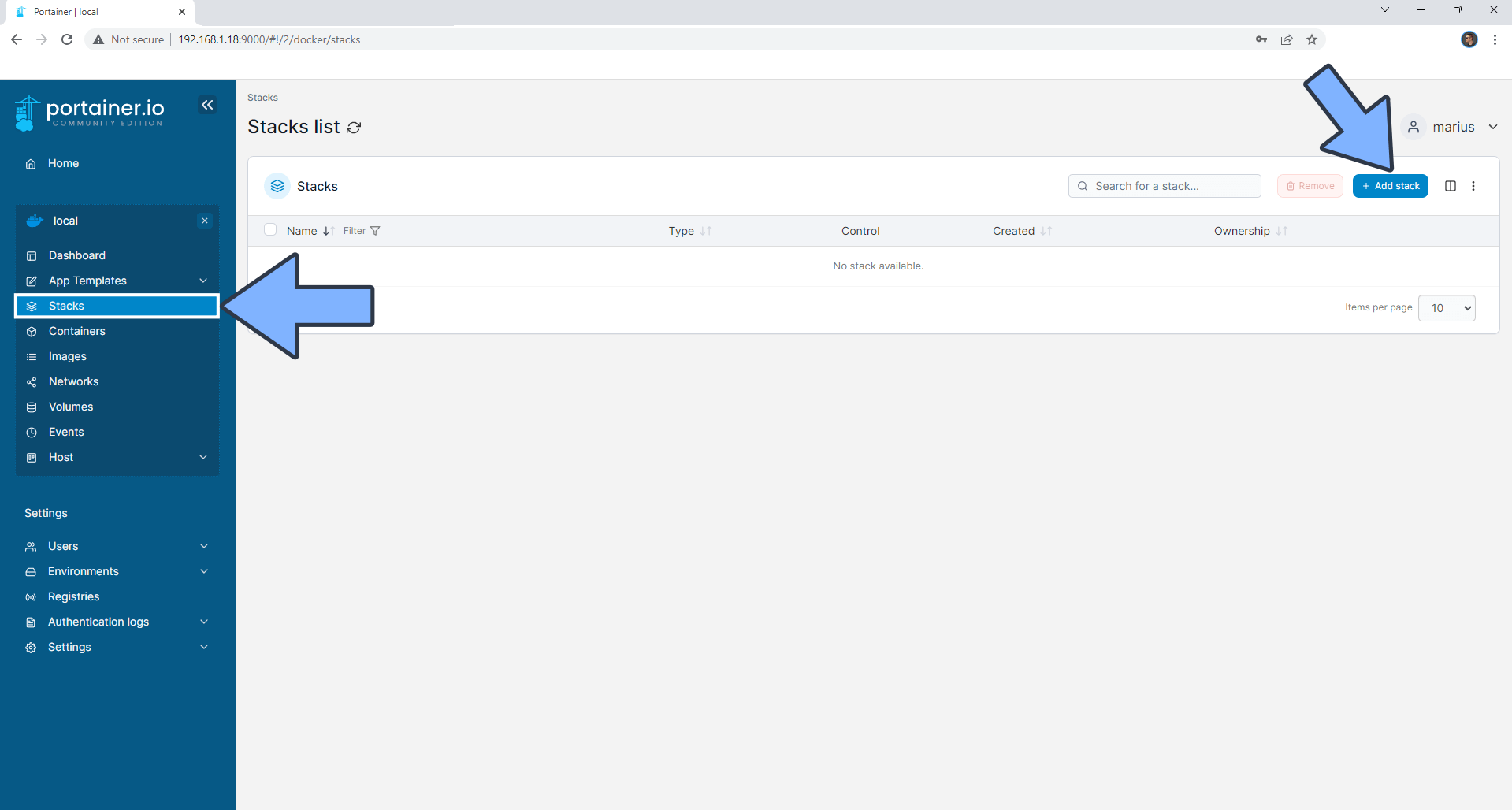
STEP 6
In the Name field type in qbittorrent. Follow the instructions in the image below.
services:
qbittorrent:
container_name: qBittorrent
image: ghcr.io/linuxserver/qbittorrent
healthcheck:
test: curl -f http://localhost:9865/ || exit 1
mem_limit: 6g
cpu_shares: 768
security_opt:
- no-new-privileges:true
network_mode: host
tty: true
restart: on-failure:5
ports:
- 6881:6881
- 6881:6881/udp
- 9865:9865
volumes:
- /volume1/docker/qbittorrent/config:/config:rw
- /volume1/docker/qbittorrent/downloads:/downloads:rw
environment:
WEBUI_PORT: 9865
PUID: 1026
PGID: 100
TZ: Europe/Bucharest
Note: Before you paste the code above in the Web editor area below, change the value numbers for PUID and PGID with your own values. (Follow my step by step guide on how to do this.) 1026 is my personal UID value and 100 is my personal GID value. You have to type in your own values.
Note: Before you paste the code above in the Web editor area below, change the value for TZ (Select your current Time Zone from this list).
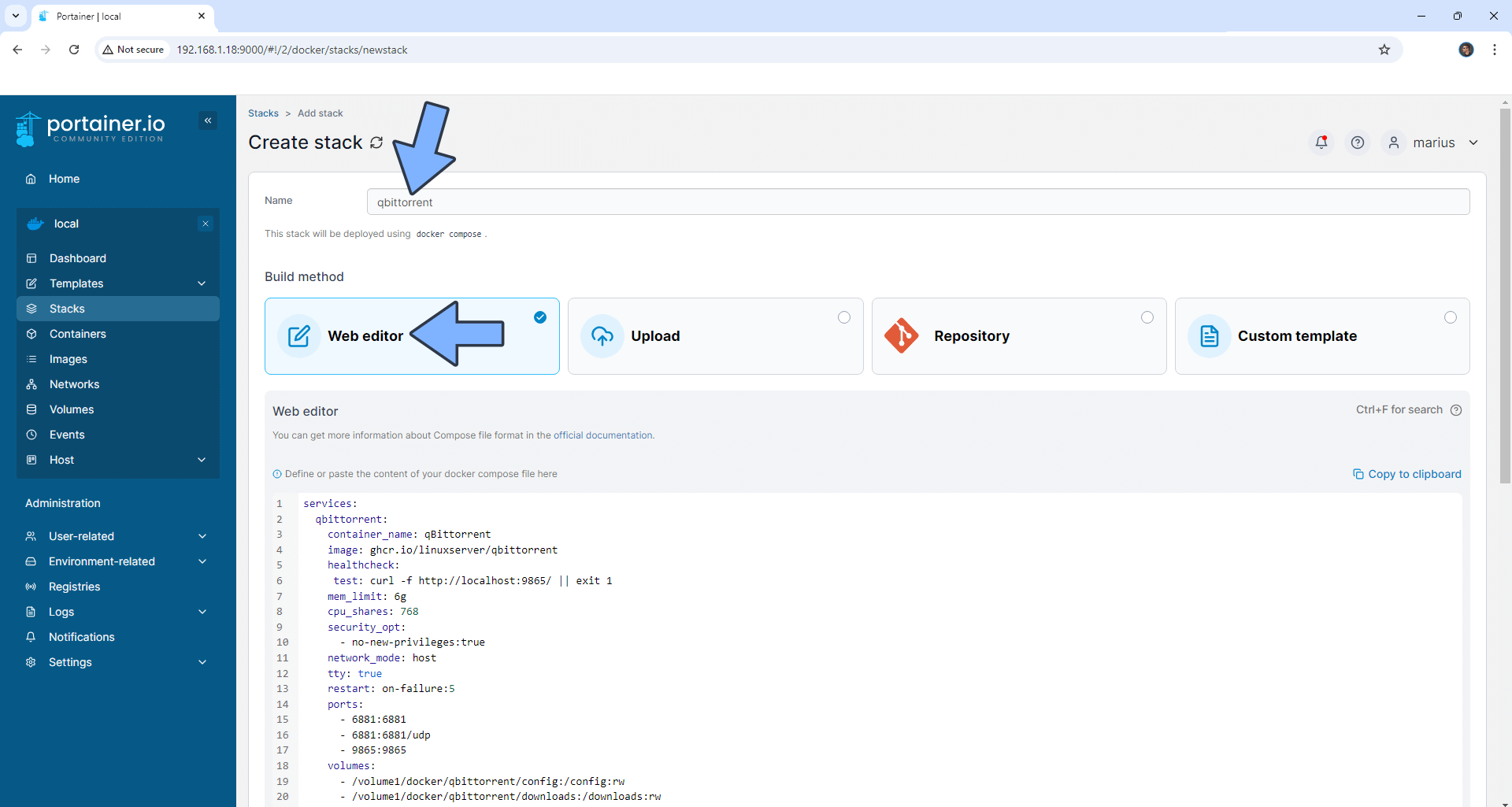
STEP 7
Scroll down on the page until you see a button named Deploy the stack. Click on it. Follow the instructions in the image below. The installation process can take up to a few minutes. It will depend on your Internet speed connection.
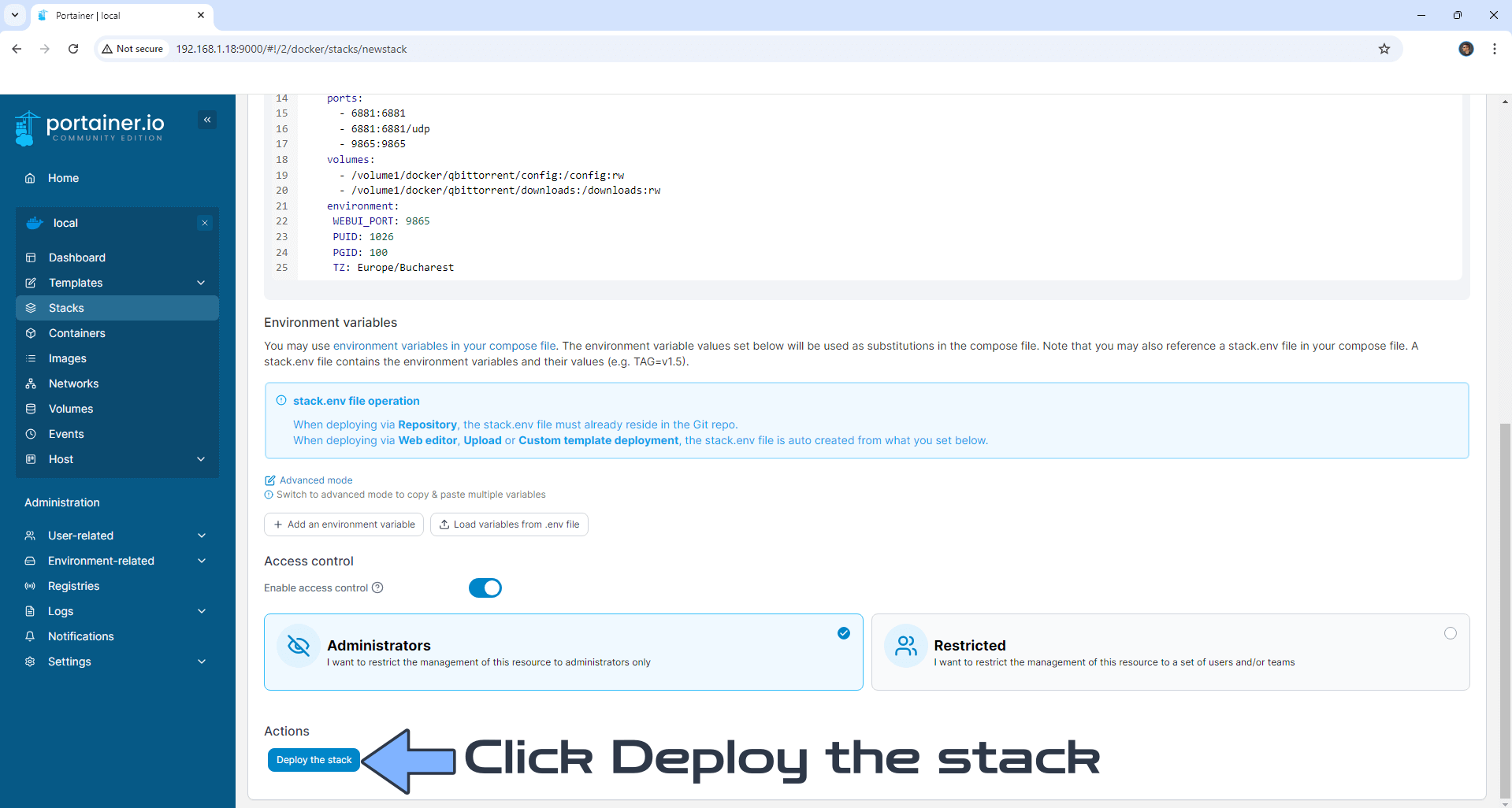
STEP 8
If everything goes right, you will see the following message at the top right of your screen: “Success Stack successfully deployed“.

STEP 9
On the left sidebar in Portainer, click Containers. Identify your qBittorrent instance, then click on the little log icon. Follow the instructions in the image below.
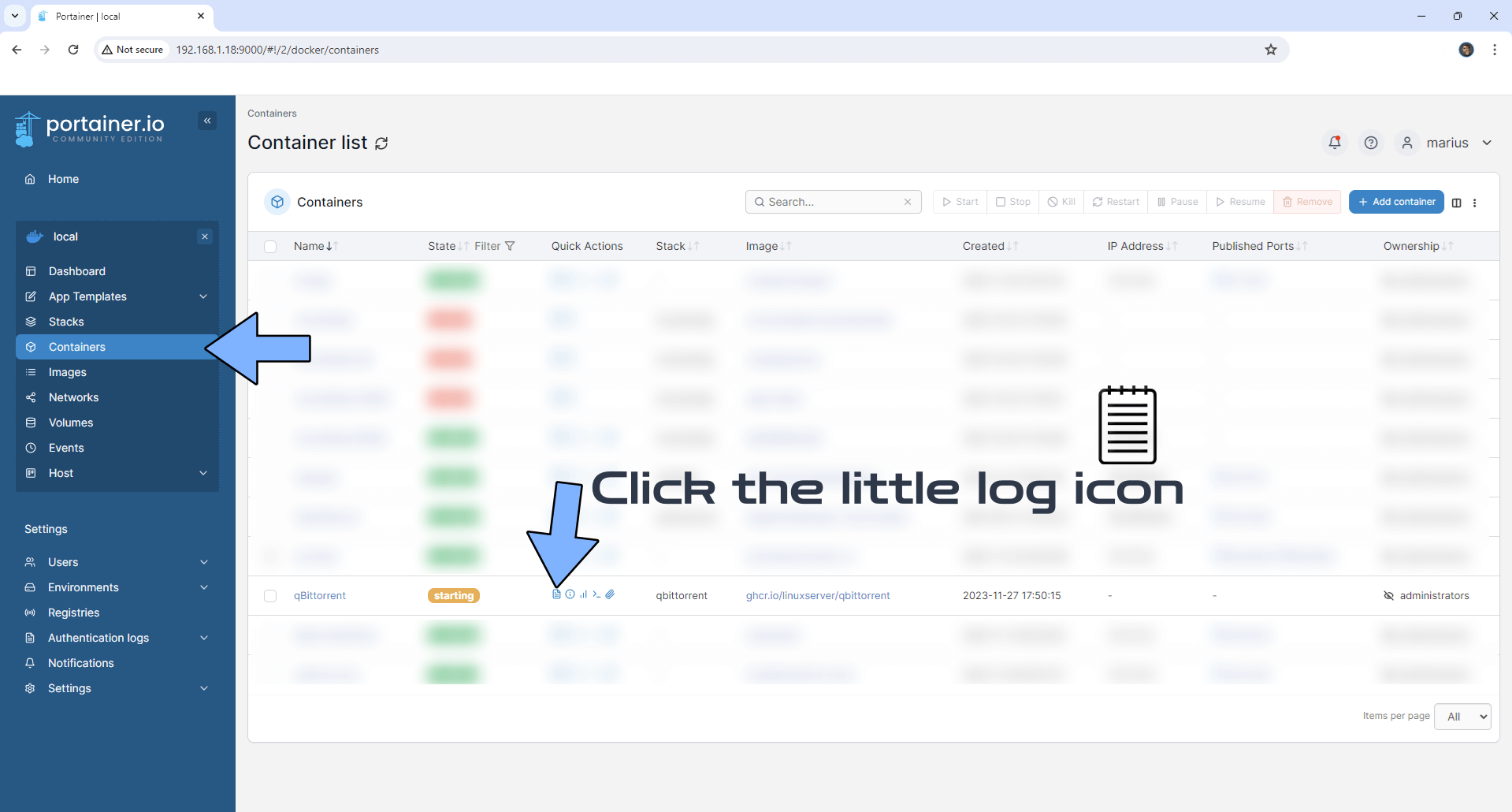
STEP 10
Copy your own temporary password. Follow the instructions in the image below.
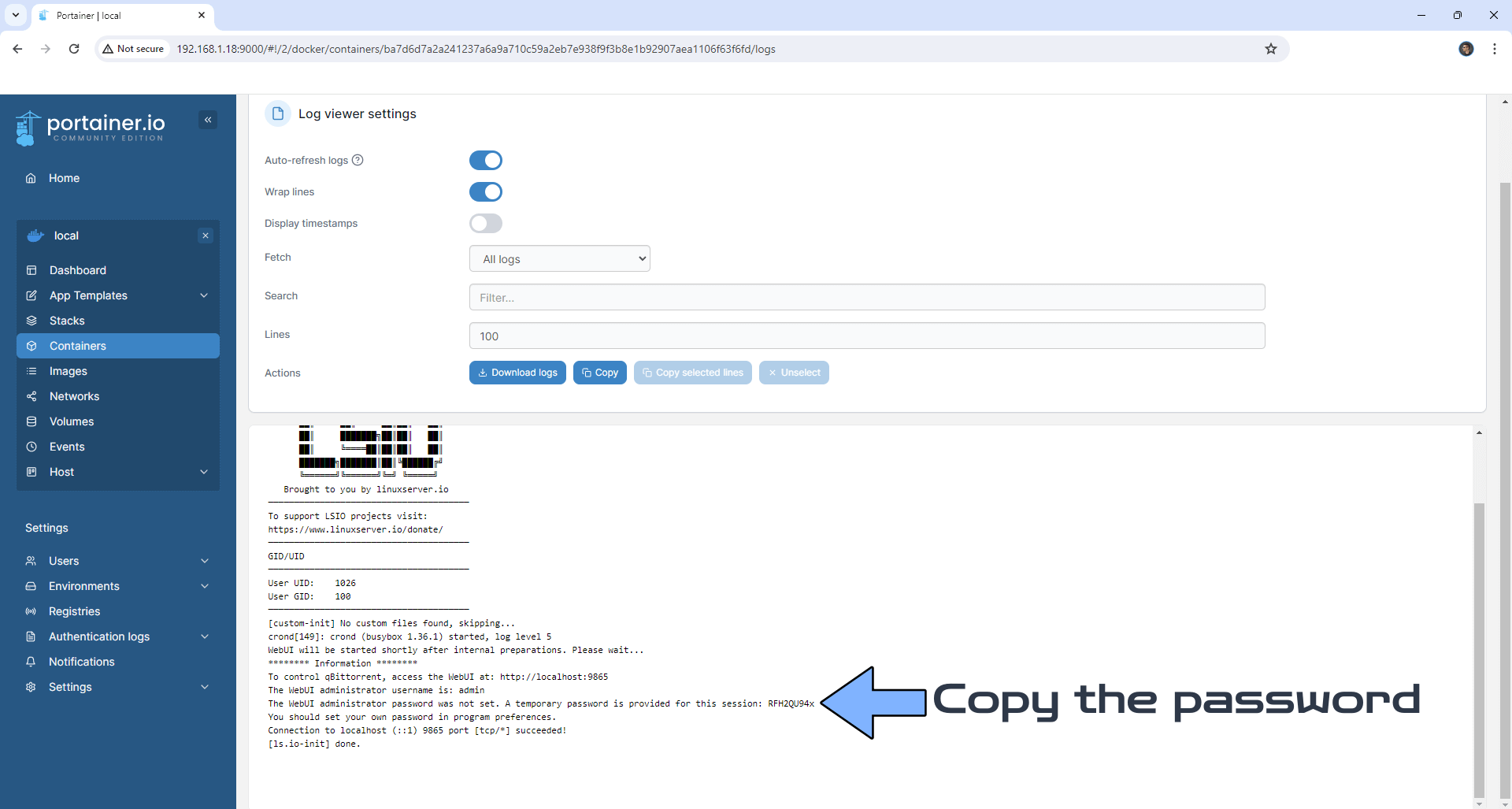
STEP 11
🟢Please Support My work by Making a Donation. Almost 99,9% of the people that install something using my guides forget to support my work, or just ignore STEP 1. I’ve been very honest about this aspect of my work since the beginning: I don’t run any ADS, I don’t require subscriptions, paid or otherwise, I don’t collect IPs, emails, and I don’t have any referral links from Amazon or other merchants. I also don’t have any POP-UPs or COOKIES. I have repeatedly been told over the years how much I have contributed to the community. It’s something I love doing and have been honest about my passion since the beginning. But I also Need The Community to Support me Back to be able to continue doing this work.
STEP 12
Now open your browser and type in http://Synology-ip-address:9865 Type in the default Username that is admin and the temporary password that you have previously copied at STEP 10. Click Login. Follow the instructions in the image below.
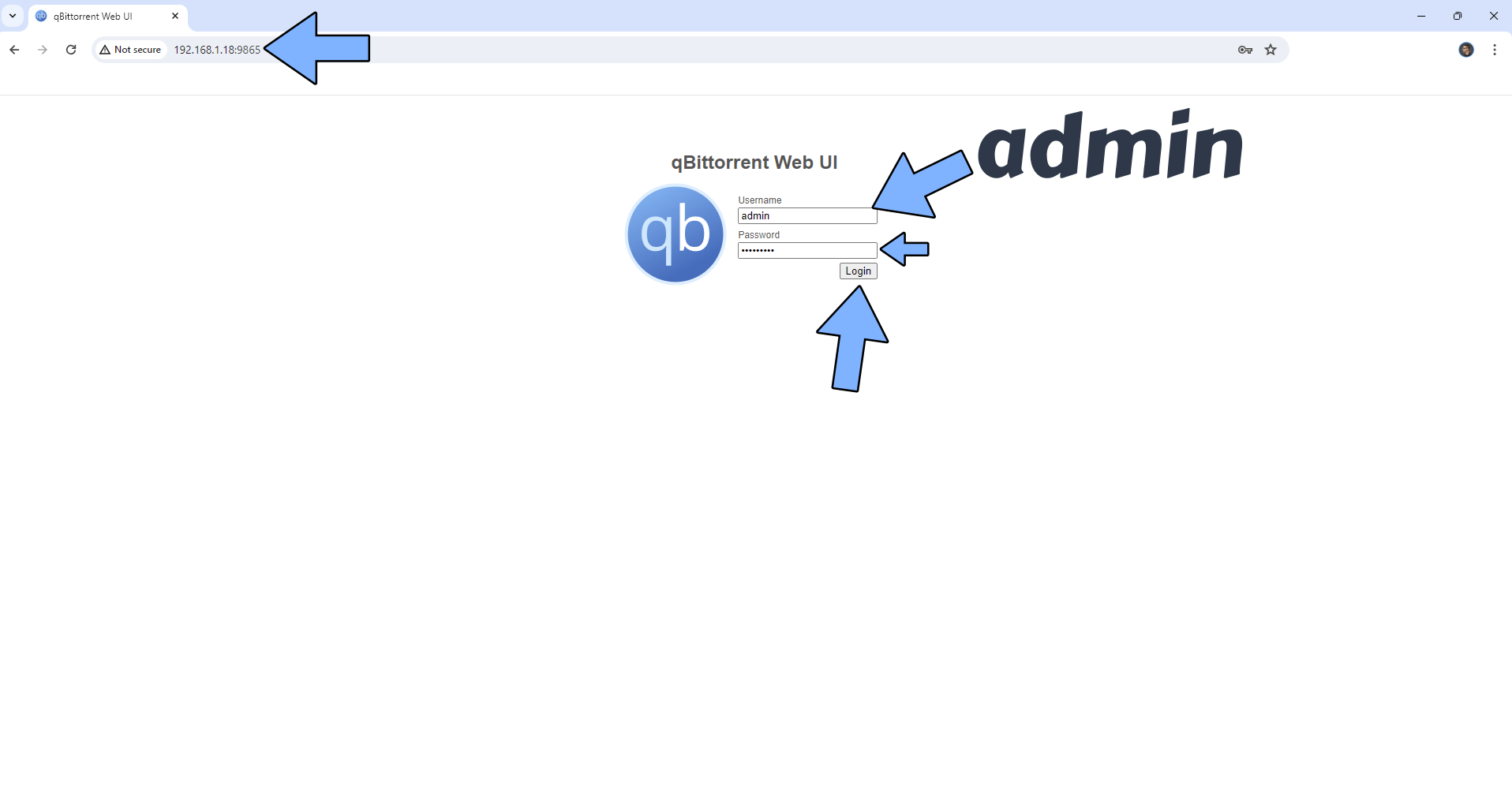
STEP 13
Change the default username and the temporary password with your own credentials. Click the settings icon. Click the Web UI tab. In the Authentication area, type in your own Username and Password, then scroll down the window until you find the Save button. Follow the instructions in the image below.
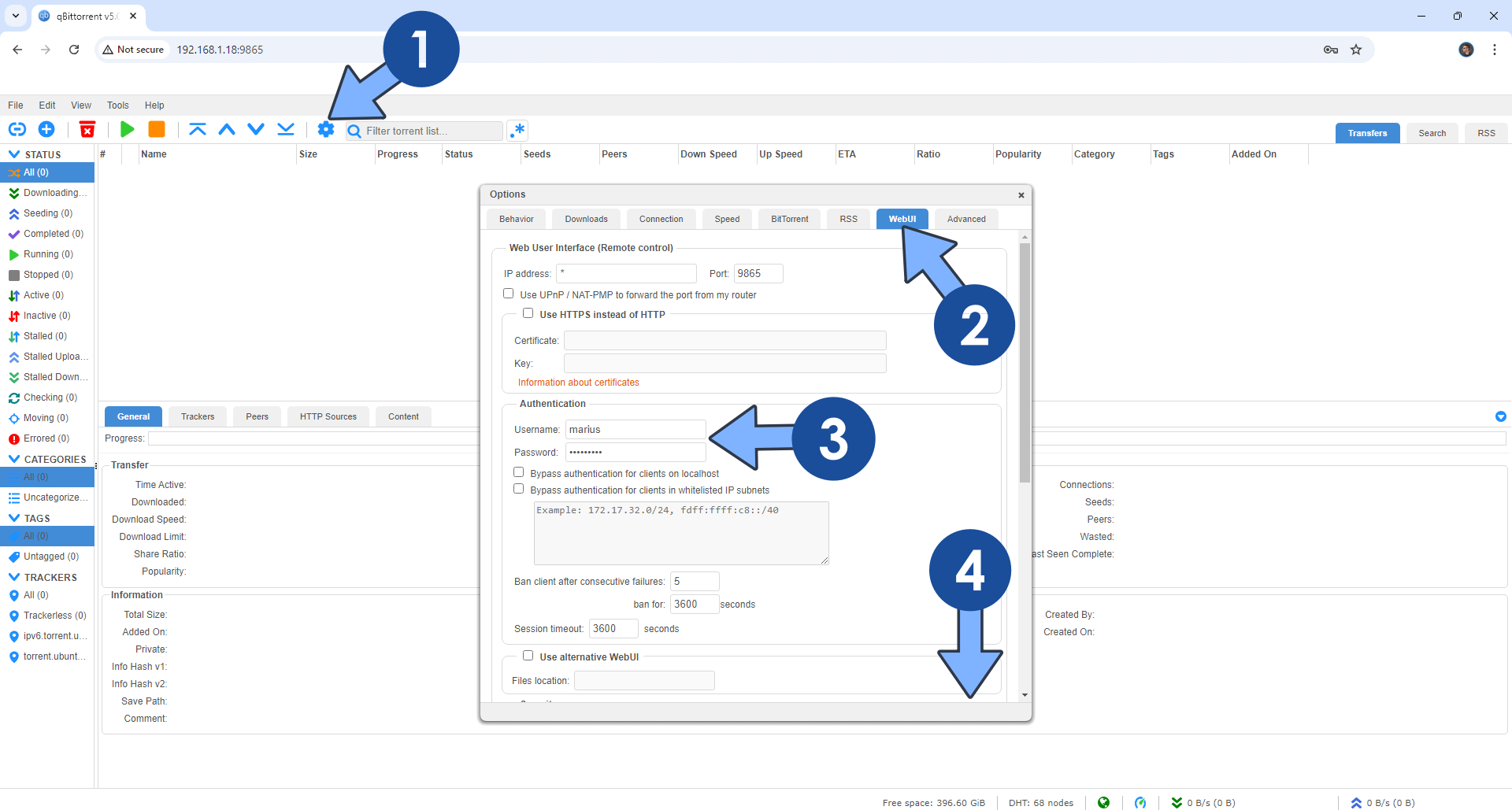
STEP 14
Click the Save button to Save the settings. Follow the instructions in the image below. From now on you will connect to the qBittorrent instance with your own Username and Password that you have previously created at STEP 13.
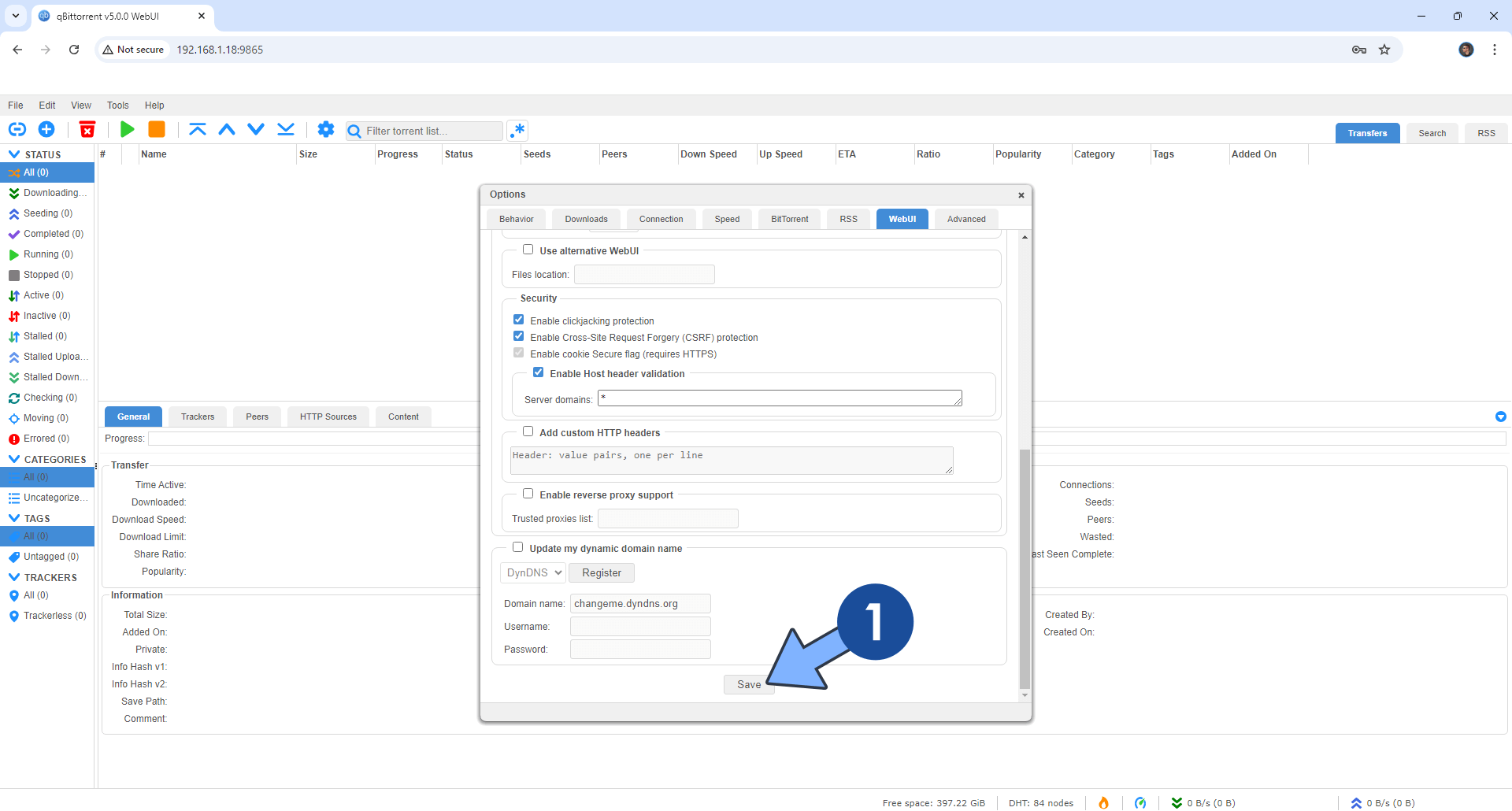
STEP 15
You can start downloading something!
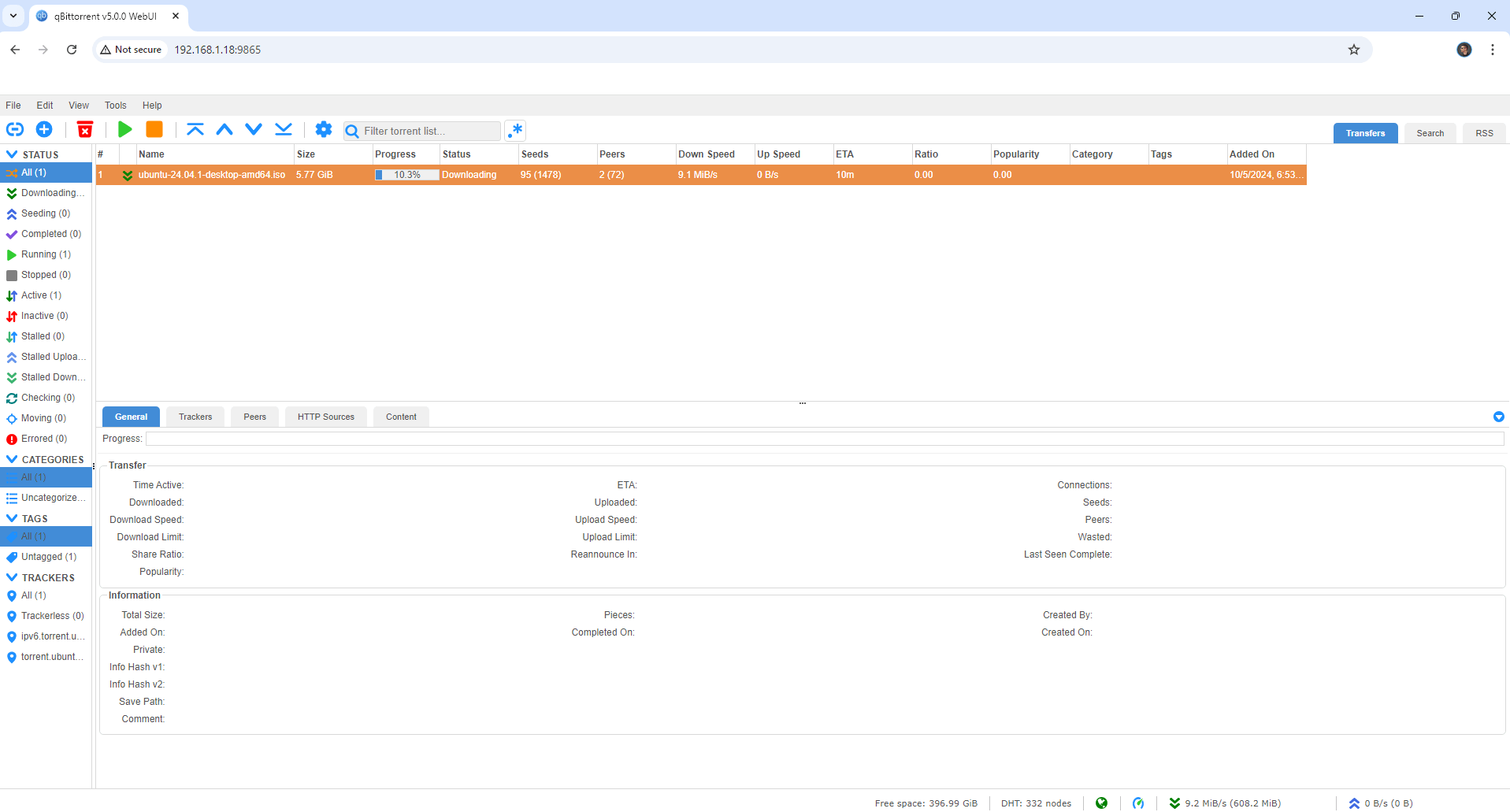
Enjoy qBittorrent!
🆘TROUBLESHOOTING
If you encounter issues by using this container, make sure to check out the Common Docker issues article.
Note: If you want to run the qBittorrent container over HTTPS, check How to Run Docker Containers Over HTTPS. In order to make qBittorrent work via HTTPS, it’s mandatory to activate WebSocket.
Warning: Remember to uninstall Synology Download Station package or qBittorrent won’t be able to download anything because Synology Download Station is using the same port as qBittorrent 6881.
Warning: Your qBittorrent container run in bridge network mode. If you experience connections problems remember to set your Synology Firewall in Control Panel / Security / Firewall / Edit Rules and allow IP-Ranges 172.17.0.0/16 – Take a look at “RULE 6” in my Firewall article .
Note: Install qBittorrent with VueTorrent Web UI.
Note: Can I run Docker on my Synology NAS? See the supported models.
Note: How to Back Up Docker Containers on your Synology NAS.
Note: You can use qBittorrent together with Flood for a better user experience.
Note: Find out how to update qBittorrent container with the latest image.
Note: How to Free Disk Space on Your NAS if You Run Docker.
Note: How to Schedule Start & Stop For Docker Containers.
Note: How to Activate Email Notifications.
Note: How to Add Access Control Profile on Your NAS.
Note: How to Change Docker Containers Restart Policy.
Note: How to Use Docker Containers With VPN.
Note: Convert Docker Run Into Docker Compose.
Note: How to Clean Docker.
Note: How to Clean Docker Automatically.
Note: Best Practices When Using Docker and DDNS.
Note: Some Docker Containers Need WebSocket.
Note: Find out the Best NAS Models For Docker.
Note: Activate Gmail SMTP For Docker Containers.
This post was updated on Sunday / July 6th, 2025 at 10:31 PM
